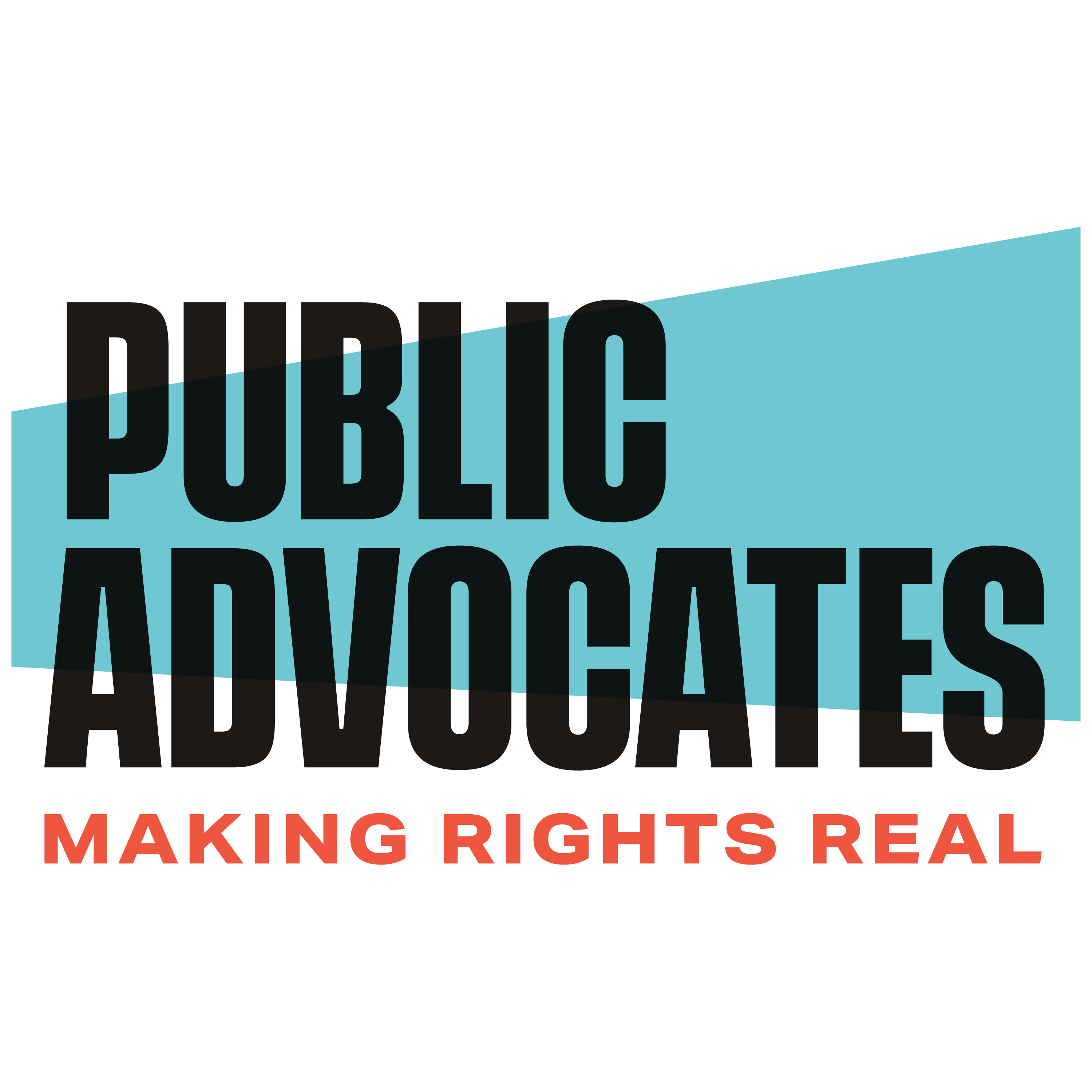State Climate Policy
Public Advocates is working to boost funding for clean air programs in low-income communities throughout California that suffer disproportionately from the causes and effects of climate change.
Since becoming law in 2012, SB 535 has directed billions of dollars from polluter fees toward projects that have reduced the State’s carbon emissions, and helped revitalize disadvantaged communities—the neighborhoods facing the most poverty and pollution—throughout California. However, communities have long raised the need to increase investments made within disadvantaged communities and designate investments to benefit low-income families.
These needs have been incorporated into Assembly member Gomez’s AB 1550, which was introduced in January of 2016. After months of working hard in the California State Legislature, Public Advocates and our partners played a key role in the passage of AB 1550, which was signed into law by Governor Brown on September 14, 2016. Find out more about AB 1550 and other victories for climate and social justice in 2016 in this blog, by Public Advocates’ Chelsea Tu.
The Opportunity
California’s controversial cap-and-trade program is expected to generate tens of billions of dollars in new revenues over the next decade. If invested wisely, these funds can reduce greenhouse gas emissions, provide relief to highly-polluted communities, and help our metropolitan areas grow sustainably and equitably by investing in clean air programs, such as improved local transit service and affordable housing near transit and jobs.
Background
Delivering benefits to disadvantaged communities has been a central and consistent theme of the Legislature’s greenhouse gas reduction efforts since the enactment of Assembly Bill 32, the Global Warming Solutions Act of 2006. AB 32 set a target for reducing California’s greenhouse gas (GHG) emissions to 1990 levels by 2020. As part of implementing that goal, the California Air Resources Board (ARB) put in place a Cap and Trade system. The first quarterly auction of allowances under that system, on November 14, 2012, raised a total of $288 million.
The allocation of Cap and Trade revenues is governed by a pair of bills that Gov. Jerry Brown signed in September 2012. The first bill, AB 1532 (Perez), requires the Department of Finance, in consultation with ARB, to prepare a three-year investment plan that ensures that Cap and Trade proceeds reduce GHG emissions while maximizing job creation, public health and other so-called “co-benefits,” and “direct[ing] investment toward the most disadvantaged communities and households in the state.”
The companion bill, SB 535 (de León), quantified the minimum benefits that Cap and Trade revenues must deliver to disadvantaged communities. After Cal/EPA identifies disadvantaged communities “based on geographic, socioeconomic, public health, and environmental hazard criteria,” the bill requires that the investment plan ensure that at least 25% of auction revenues are set aside for “projects that provide benefits to [these disadvantaged] communities,” with at least 10% in projects “located within” these communities. SB 535 was co-sponsored by Coalition for Clean Air, Asian Pacific Environmental Network, Ella Baker Center, Greenlining Institute, NAACP and Natural Resources Defense Council.
Public Advocates is working with these allies to ensure that disadvantaged communities truly benefit from the investment of Cap and Trade revenues required by SB 535. At the same time, we are seizing the opportunity to fund greater transit service and affordable housing near transit — twin strategies under SB 375 to reduce GHG emissions while improving access to opportunity for low-income families and protecting them from displacement.
SB 535: Guaranteed Benefits to Disadvantaged Communities
Working with a broad coalition led by the co-sponsors of SB 535, we have helped develop a framework for ensuring that the benefits promised to disadvantaged communities by SB 535 are a reality. First, the process must be inclusive, transparent and accountable, so that disadvantaged communities have a real voice in shaping the expenditures and selecting the investments intended to benefit them. Second, the projects earmarked for disadvantaged communities under SB 535 must (a) specifically address the high priority needs of those communities, (b) achieve measurable benefits for them, and (c) deliver benefits that significantly outweigh any burdens that will fall on those communities. If the investment plan is based on these principles, disadvantaged communities can hope to see the kind of investment that meets their needs and strengthens their neighborhoods, rather than increasing displacement pressures.
Funding for SB 375 Implementation
In addition to ensuring that at least 25 percent of the revenues directly benefit disadvantaged communities, we are working with the Sustainable Communities for All Coalition to ensure that a significant percentage of revenues go toward operating more transit service, and providing more homes affordable to lower-income households near transit and jobs.
Transit operating funds are perpetually in short supply. As a result, the local transit services used by lower-income families have been cut, and fares increased, all over California, despite growing demand. With the demise of redevelopment, funding for affordable housing — already in very short supply — has also been decimated. The core riders of local transit are the same lower-income families who are being gentrified out of urban neighborhoods. Affordable housing in transit-oriented development (TOD) will not only stabilize these neighborhoods as they continue to gentrify, preventing mass displacement, but also provide a growing ridership that will make transit more sustainable and affordable in the future.
Investing in transit operations and affordable TOD housing will provide significant economic, public health and social equity co-benefits while also immediately reducing GHG emissions and other co-pollutants.
Timeline
September 14, 2016– Governor Brown signs AB 1550 (Gomez) into law at a bill signing ceremony in Fresno, California.
August 31, 2016– Legislators send climate justice bills to Governor Brown, see the press release issued by Public Advocates, The Greenlining Institute, APEN, the Coalition for Clean Air and SCOPE. Following passage of SB 32 and AB 197, which extend the state’s effort to curb greenhouse gas emissions, legislators took two more crucial steps to expand the benefits of these efforts in underserved communities. They passed AB 1550 (Gomez), which will guarantee that going forward, at least 35 percent of Greenhouse Gas Reduction Fund proceeds will benefit underserved communities and low-income Californians; they also passed legislation allocating $900 million already collected in the state’s carbon auctions to projects such as clean transportation, urban forestry, home weatherization and solar power that will benefit underserved California communities.
August 2016 – AB 1550 (Gomez) has cleared several legislative hurdles, and is scheduled to be voted on in the Senate Appropriations Committee on August 11, 2016. Public Advocates and a wide array of community partners and climate justice advocates has mounted a campaign to encourage swift passage of this bill, so it can reach Governor Brown’s desk by end of Summer.
May 2016 – AB 1550 (Gomez), introduced on January 4, 2016, would build on the successes of SB 535 (De Leon, 2015) and direct 25 percent of Greenhouse Gas Reduction Fund (GGRF) investments to benefit disadvantaged communities, and an additional 25 percent of GGRF investments to benefit low-income households. Learn more about the bill through this visual fact sheet developed by Public Advocates and the SB 535 Coalition.
March 2016 – Public Advocates, along with our partners at Asian Pacific Environmental Network, Coalition for Clean Air, and the Greenlining Institute, are spearheading support for AB 1550 (Gomez), which would build on the successes of SB 535 (De Leon, 2012) to direct 25 percent of Greenhouse Gas Reduction Fund (GGRF) investments to be located in and benefit disadvantaged communities, as well as an additional 25 percent of GGRF investments to benefit low-income households.
July 2015 – For a second year in a row, California will invest a sizeable share of anticipated Cap and Trade revenues to fund two programs prioritized by Public Advocates and our allies in the SB 535 Coalition and Sustainable Communities for All. An estimated $2.3B of Cap and Trade revenue will be deposited in the Greenhouse Gas Reduction Fund in FY16. Twenty percent of these funds will flow directly to the Affordable Housing and Sustainable Communities Program administered by the Strategic Growth Council (an estimated $400M) and five percent is dedicated to the Low Carbon Transit Operating Program run by Caltrans (an estimated $100M).
Last year, the budget funded these programs for the first time at $130M and $25M levels, respectively. Under SB 535 (de León 2012), a minimum of 25% of the revenues, this year an estimated $559M, must be spent to benefit the top 25% of California’s most disadvantaged communities. These initiatives will help meet California’s climate goals while addressing poverty and expanding opportunity for low-income Californians.
December 2014 – Catastrophic weather events and increasingly stark gaps between rich and poor highlight the urgency of California’s efforts to combat the intertwined crises of climate change and inequality. California is leading the nation with innovative approaches to addressing these challenges, but with legislation in need of updating and key programs at risk of sunsetting by 2020, the Governor and the state legislature must act now to extend and strengthen the state’s commitments to combat climate change equitably.
September 2014 – We and our allies won commitments from the California Air Resources Board that will help make SB 535’s promise a reality.
June 2014 — The 2014-15 budget passed by the legislature and signed by the governor included $872 million for Cap-and-Trade revenues from the Greenhouse Gas Reduction Fund, allocating substantial amounts for two of our priorities.
July 2013 — Public Advocates and our allies strongly opposed Governor Brown’s proposal to loan the $500 million in anticipated cap-and-trade auction revenues for fiscal year 2013-14 to the General Fund. While the Legislature ultimately approved the loan, we helped generate broad push back from advocates and key legislators, including the California Latino Legislative Caucus. (Read the CLLC opposition letter)
We are working with State Senator Ricardo Lara (D – Long Beach) on legislation that would require that any excess revenues generated this year above the loan amount, up to $125 million, are invested immediately in disadvantaged communities. The legislation, SB 605, supported by more than 50 environmental justice, social equity and labor organizations, also makes important revisions to AB 32 by strengthening safeguards that reduce copollutants, short-lived climate pollutants and restricting cap-and-trade offsets to California.
May 2013 — Public Advocates and our allies successfully advocated for the inclusion of a set of key programs in the 3-year Investment Plan developed by the California Air Resources Board and the Department of Finance. These programs included the State Transit Assistance program, HCD’s Transit-Oriented Development affordable housing program, Multifamily Affordable Solar Housing/Single Family Affordable Housing programs, Weatherization Assistance and Energy Savings Assistance programs for low-income households, and Urban Forestry.

